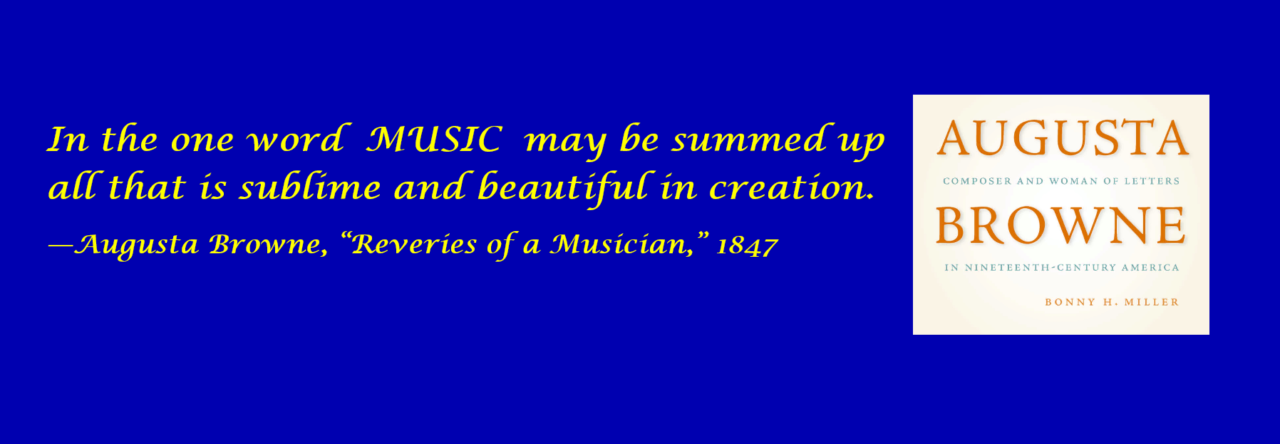On the Fourth of July, 1826, Augusta Browne strolled along the streets of Boston with her siblings and parents. The day held special significance since it was the fiftieth anniversary of Independence Day, the day the Continental Congress passed the Declaration of Independence. Bands were marching and performing in parades and celebrations throughout Boston. Augusta’s father had even persuaded Mr. Kendall’s Brigade Band to play his American Grand March in one of the events.
The Browne family had only arrived in Boston a few weeks earlier. It was Augusta’s first taste of America after living in St. John (New Brunswick, Canada) since she was a toddler. The Boston Commercial Gazette reported that the “glorious day was celebrated in this city with every becoming demonstration of joy and gratitude.” The little girl drank in the sights and sounds of the grand celebration in Boston. Memory of the festive, patriotic music heard that day may have lingered in Augusta’s mind as one of her earliest impressions of the United States. That memory may have been a catalyst years later for her American Bouquet.





